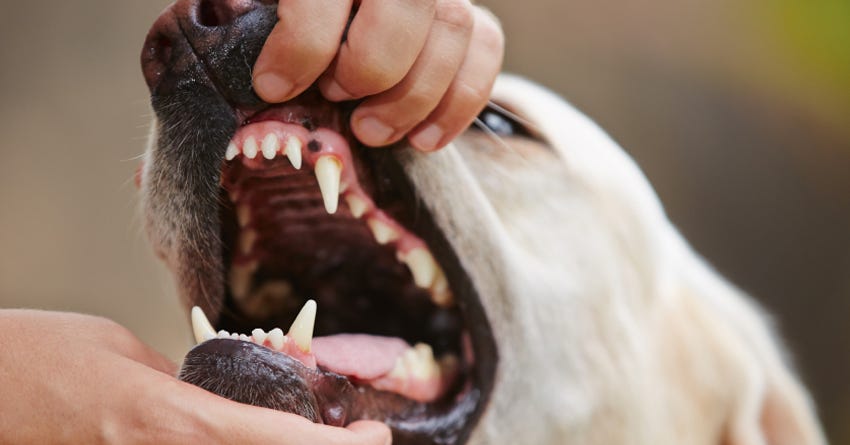6 Tips for Keeping Your Dog's Teeth in Good Shape

It’s time to start incorporating dental care into your dog’s routine. Unfortunately, you probably won’t be able to train him to brush his own teeth—but here’s what you can do.
You probably spend a few minutes every morning and evening brushing and flossing your pearly whites (if not, don’t worry—we won’t tell your dentist).
But most pet owners don’t pay much attention to their dog’s teeth. Maybe you bring your dog in for a cleaning every few years at the vet—but these treatments can be stressful for your dog and expensive for you, and there’s a lot you could be doing in between sessions. After all, you don’t just rely on visits to the dentist to keep your teeth in good form!
The Scoop
Obviously, dog teeth and human teeth are quite different. Because of our sugary diets, human teeth are much more prone to cavities than a dog’s teeth are, meaning you don’t have to be quite as meticulous with your canine’s oral hygiene as you are with your own. Still, you should get in the habit of caring for your dog’s teeth on a regular basis.Start Clean
Ideally, your dog’s dental hygiene routine will start in his puppy years. But if you’re starting later in his life, you’ll want to start him off on a clean slate. Ask your vet about teeth cleaning options and vow to stay on top of your dog’s teeth from here on out. © iStock Photo / Lightguard
© iStock Photo / LightguardGet Brushing One of the best ways to keep your dog’s teeth clean is good ole fashioned tooth brushing. Check out your local pet supplier for specialized dog toothbrushes and toothpaste. A soft-bristled kids toothbrush should be okay for most dogs, but do not use human toothpaste under any circumstance!
Angle the toothbrush at 45 degrees and brush your dog’s teeth with small circular strokes. Start out slowly to get your dog used to the brushing.
Clean Eating
Since the majority of kibble brands are laden with processed simple carbohydrates, any of the few pellets that are actually ‘chewed’ (most dogs swallow kibble whole) tend to pack these starches and sugars into the gum-line, increasing the likelihood of dental disease. Home-prepared and whole food diets do not contribute to tartar buildup to the same extent as dry foods. And fresh, minimally-processed pet foods cause almost no tartar build up in most cases.Chew On
If your dog loves bones, you’re in luck: chewing on raw marrow bones can help keep his teeth squeaky clean.Pay Attention
Keeping your dog’s teeth in good form is more than just ensuring he has white teeth in photos—it’s about being proactive about your dog’s health. Taking a regular look inside your dog’s mouth can give you valuable insight as to what’s going on in the rest of his body. For instance, while doggy breath is normal, a sudden change in the smell of the breath can be a signal that something’s amiss. Keep your eyes out for unusual signs, like loose gums or changes, like new spots, on your dog’s tongue.Dogs have the tendency to put some weird things in their mouths, including objects that can damage their teeth. Keep your eyes peeled for cracked or badly chipped teeth.
If you spot anything out of the ordinary, book an appointment at the vet. Early intervention can go a long way in keeping your dog in top shape.


